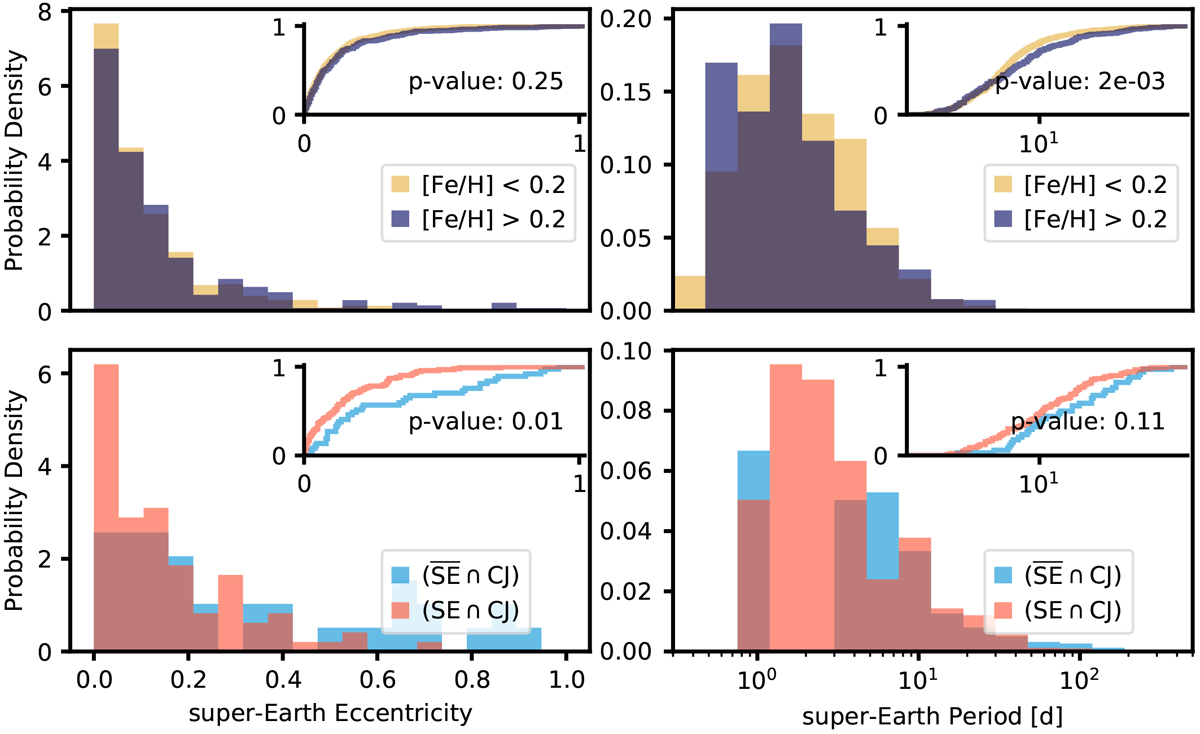Fig. 10

Download original image
Same as Fig. 8, but for all super-Earths that ever formed during the systems’ histories. This includes both surviving planets and planets that we classified as super-Earths at the time of their removal (via ejection or collision events). Planets accreted to the star are not shown. With p = 0.25, a Kolmogorov-Smirnov test suggests a negligible statistical distance between the eccentricity distributions in high- and low-metallicity systems. On the other hand, the difference between systems with and without super-Earths is significant: where they are missing, eccentricities are strongly enhanced. The period distribution in the SE ∩ CJ population, which contains surviving super-Earths, is shifted towards lower values compared to ![]() . These trends point to dynamical excitation of super-Earths by giant companions where they are present.
. These trends point to dynamical excitation of super-Earths by giant companions where they are present.
Current usage metrics show cumulative count of Article Views (full-text article views including HTML views, PDF and ePub downloads, according to the available data) and Abstracts Views on Vision4Press platform.
Data correspond to usage on the plateform after 2015. The current usage metrics is available 48-96 hours after online publication and is updated daily on week days.
Initial download of the metrics may take a while.


